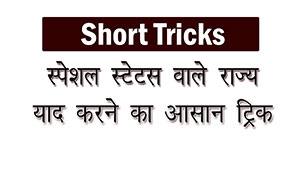Compound Interest Questions Answers
-
1. Find the compound interest on Rs. 7500 at 4% per annum for 2 years, compounded annually.
- Rs. 610
- Rs. 612
- Rs. 614
- Rs. 616
Answer And Explanation
Answer: Option B
Explanation:
\begin{aligned}
Amount = [7500 \times (1+ \frac{4}{100})^2] \\
= (7500 \times \frac{26}{25} \times \frac{26}{25}) \\
= 8112 \\
\end{aligned}
So compound interest = (8112 - 7500) = 612 -
2. Albert invested amount of 8000 in a fixed deposit for 2 years at compound interest rate of 5 % per annum. How much Albert will get on the maturity of the fixed deposit.
- Rs. 8510
- Rs. 8620
- Rs. 8730
- Rs. 8820
Answer And Explanation
Answer: Option D
Explanation:
\begin{aligned}
=> (8000 \times(1+\frac{5}{100})^2) \\
=> 8000 \times \frac{21}{20}\times \frac{21}{20} \\
=> 8820
\end{aligned}
-
3. What will be the compound interest on Rs. 25000 after 3 years at the rate of 12 % per annum
- Rs 10123.20
- Rs 10123.30
- Rs 10123.40
- Rs 10123.50
Answer And Explanation
Answer: Option A
Explanation:
\begin{aligned}
(25000 \times (1 + \frac{12}{100})^3) \\
=> 25000\times\frac{28}{25}\times\frac{28}{25}\times\frac{28}{25} \\
=> 35123.20 \\
\end{aligned}
So Compound interest will be 35123.20 - 25000
= Rs 10123.20 -
4. A man saves Rs 200 at the end of each year and lends the money at 5% compound interest. How much will it become at the end of 3 years.
- Rs 662
- Rs 662.01
- Rs 662.02
- Rs 662.03
Answer And Explanation
Answer: Option C
Explanation:
\begin{aligned}
[200(1+\frac{5}{100})^3 + 200(1+\frac{5}{100})^2+ \\ 200(1+\frac{5}{100})]
= [200(\frac{21}{20} \times \frac{21}{20} \times \frac{21}{20})\\
+ 200(\frac{21}{20}\times\frac{21}{20})+200(\frac{21}{20})] \\
= 662.02
\end{aligned} -
5. Find compound interest on Rs. 7500 at 4% per annum for 2 years, compounded annually
- Rs 312
- Rs 412
- Rs 512
- Rs 612
Answer And Explanation
Answer: Option D
Explanation:
Please apply the formula
\begin{aligned}
Amount = P(1+\frac{R}{100})^n \\
\text{C.I. = Amount - P}
\end{aligned} -
6. Find the compound interest on Rs.16,000 at 20% per annum for 9 months, compounded quarterly
- Rs 2520
- Rs 2521
- Rs 2522
- Rs 2523
Answer And Explanation
Answer: Option C
Explanation:
Please remember, when we have to calculate C.I. quarterly then we apply following formula if n is the number of years
\begin{aligned}
Amount = P(1+\frac{\frac{R}{4}}{100})^{4n}
\end{aligned}
Principal = Rs.16,000;
Time=9 months = 3 quarters;
Rate = 20%, it will be 20/4 = 5%
So lets solve this question now,
\begin{aligned}
Amount = 16000(1+\frac{5}{100})^3 \\
= 18522\\
C.I = 18522 - 16000 = 2522
\end{aligned} -
7. The present worth of Rs.169 due in 2 years at 4% per annum compound interest is
- Rs 155.25
- Rs 156.25
- Rs 157.25
- Rs 158.25
Answer And Explanation
Answer: Option B
Explanation:
In this type of question we apply formula
\begin{aligned}
Amount = \frac{P}{(1+\frac{R}{100})^n} \\
Amount = \frac{169}{(1+\frac{4}{100})^2} \\
Amount = \frac{169 * 25 * 25}{26*26} \\
Amount = 156.25
\end{aligned}
-
sharath kumar 8 years ago
631.525
-
naresh aswani 9 years ago
Why use this formula in quetion number 7.
As this question is as similar as other question like we have principal, rate ,interest.
Plzz help me .. -
Nitesh Bibra 10 years ago
can any1 xpalin 8th question how does it solve and get 6.....
-
AKsingh 10 years ago
can any one explain 15
-
Sheenu Mehra 11 years ago
in 4th question, 200 rupee deposite every year, so amount is calculated first 200 for 3 years, then 200 for 2 years which is deposite in 2nd year, then 200 for 1 year which is deposite in 3rd year, at last all amount is added
-
-
hemanth 12 years ago
Helpful. Very good questions. Easy to understand for beginners.
-
karzan 12 years ago
Her helpful work... Thank you..















